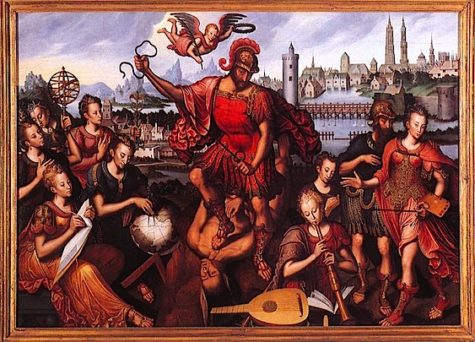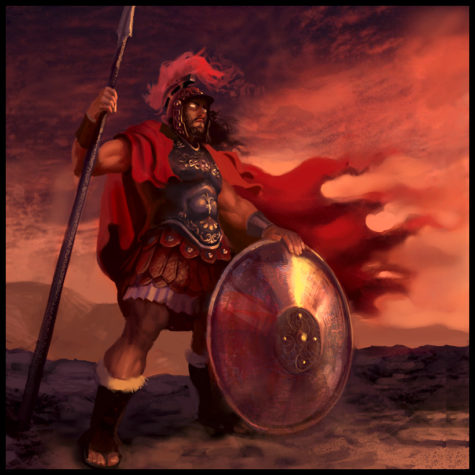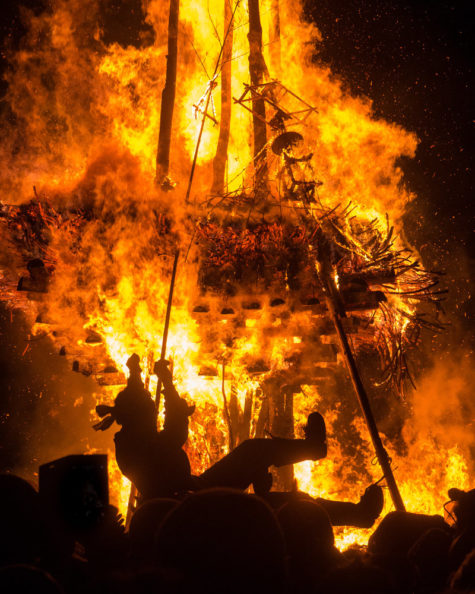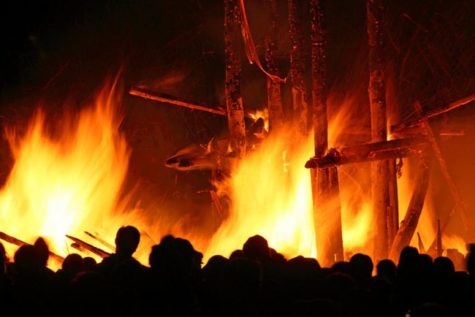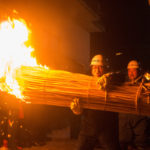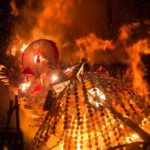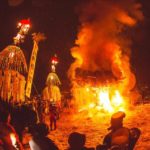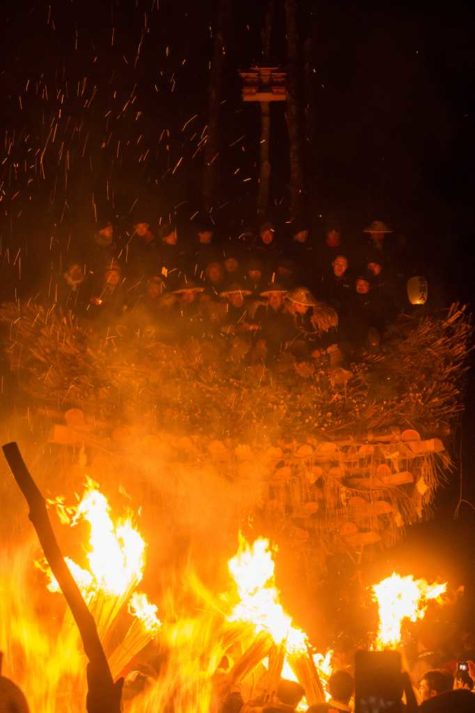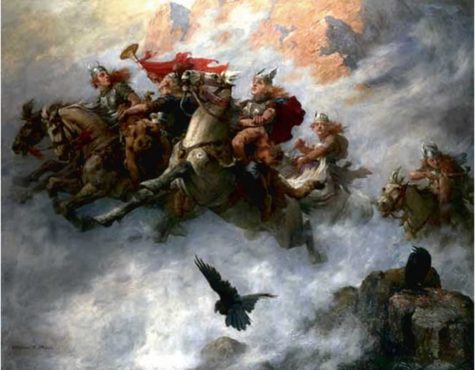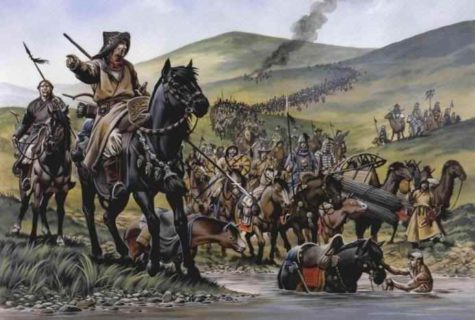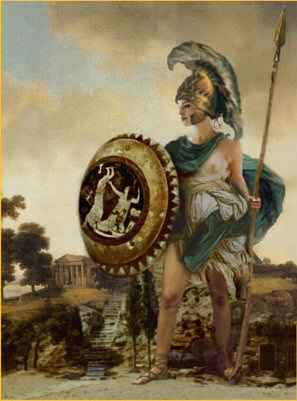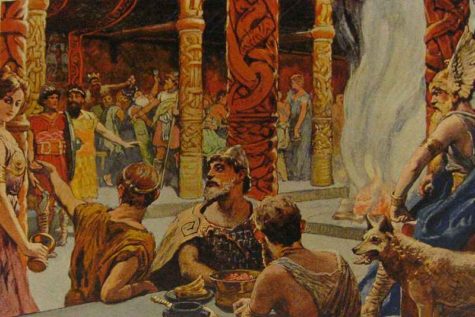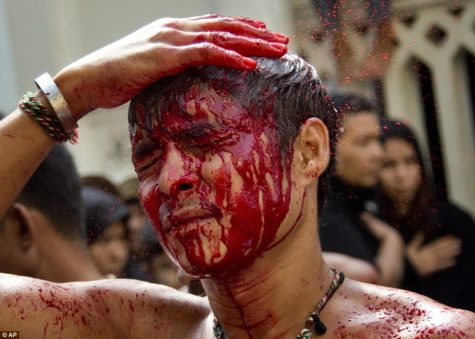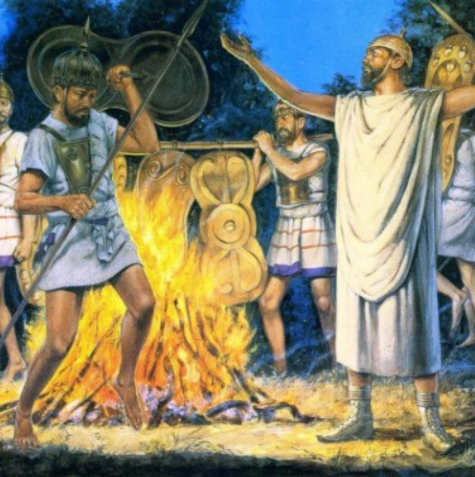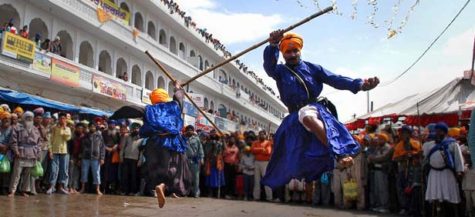War
October 23 is Slap Your Irritating Co-Worker Day! How fun is that? This is the day each year when those who have an irritating coworker don’t have to hold back, and have an excuse to slap the person they just can’t stand.
The creators of the day seem to imply that it is perfectly acceptable to really get into the day, but we think maybe the day should be taken a little tongue-in-cheek. In what ways may a co-worker be irritating?
- Maybe they talk nonstop.
- Maybe they act like they think you’re stupid.
- Maybe they constantly mess things up and create more work for other people.
- Maybe they are a constant suck up to the boss.
- Maybe they can’t keep their noses out of your personal life.
- Maybe they are so unpleasant no one can stand being in the same room with them.
Whatever it is that makes them irritating, they better watch out, because today they are going to get slapped.
How do you observe this really fun and interesting day? You could celebrate the day by slapping your irritating co-workers. But wait just one minute, even slapping has rules!
- Only one person can be slapped per hour.
- If you slap someone and they do something irritating again, you can slap them again.
- The irritating person can be held down while other co-workers slap them.
- If you are questioned by your supervisor or others, it is acceptable to lie.
Some Fun Slap A Coworker Day Activities
- Watch a Three Stooges marathon
Without a doubt, you can’t dissect the science of slapping without the Three Stooges. It is reported that Moe slapped Larry so much that one side of Larry’s face felt like leather. (You definitely have to build up to that much slapping.) So, after you survive yet another day of torture with that most obnoxious of coworkers who sits two cubes over, enjoy back-to-back episodes of one of the funniest trios in film.
- Perfect your slapping technique
Before you go into work, make sure you are ready to administer the most effective slap possible. You have, in fact, been flexing your hand muscles regularly in anticipation — and the day has finally arrived. Decide on the forehand slap, backhand slap or five finger slap. National Slap Your Annoying Coworker Day is rife with possibilities.
- Train others on how to give a good slap
Since it’s National Slap Your Annoying Coworker Day, don’t keep all the fun to yourself. Spread the joy around. During the next break, train a group of your favorite coworkers on all the possible slapping scenarios. Help them with their coordination because there’s nothing worse than winding up to slap somebody and missing the mark.
Sources:
This festival marks the start of Spring in the old Roman calendar. Each year the Feriae Marti was held, beginning on the Kalends of March and continuing until the 24th. Dancing priests, called the Salii, performed elaborate rituals over and over again, and a sacred fast took place for the last nine days. The dance of the Salii was complex, and involved a lot of jumping, spinning and chanting. On March 25, the celebration of Mars ended and the fast was broken at the celebration of the Hilaria, in which all the priests partook in an elaborate feast.
March is the third month of the year in the Gregorian calendar system, but was actually the first month on the Roman calendar. Originally named Martius, this month in Ancient Rome was characterized by religious festivals and preparations for war. Mars, the Roman god of war was responsible for protecting Rome and securing victory in military campaigns. He is not to be confused with Ares, the impulsive Greek god of war; Mars was depicted as a more “level-headed” and “virtuous” deity than his Grecian counterpart.
General frivolity was characterized by large processions, animal sacrifices, athletic competitions, and musical performances. Courts were closed, and some agricultural chores were suspended to honor the deities. Merry-making with seeds wasn’t restricted though. Some accounts say Romans tossed seeds in the air during the festival to honor the pending thrust of spring.
During the months of March and October, specially-trained religious leaders, called flamen Martialis, led several Mars-centered festivals including:
- Feriae Marti (celebrating the new year)
- Equirria (the blessing of war horses)
- Tubilistrum (to cleanse and favor trumpets)
One of the most important rituals performed during this time was the rousing of Mars before battle. This critical ritual was performed by the commander of the Roman army who “shook the sacred spears,” shouting, “Mars, vigilia!.”
Because early Roman writers associated Mars with not only warrior prowess, but virility and power, he is often tied to the planting season and agricultural bounty.
Ritual For The Feriae Marti – Festival of Mars
- Color: Red
- Element: Fire
Altar: Set out a red cloth and lay crossed weapons, such as spears and swords, upon it. Lay a helm in the center, a horn, and a burning red candle or torch.
Offerings: Candles. Finger-shaped cakes (strues). Acts of courage, especially those which force one to fight for the defense of another or of one’s beliefs. In the morning, the exercise of Gymnastika shall be hard aerobic movements.
Daily Meal: Finger-cakes. Spicy foods, such as cayenne and chilies. Meat from uncastrated male animals.
Invocation to Mars:
Mars, warrior god, Fire that leaps
And dances, Protector of cities
And of this house, and our spirits,
Courageous one, mirror us back
Some of your courage.
Fearless one, show us a path
Through our many fears.
Armored one, give us protection
From all who would harm us.
And may your sword turn away
All danger from our flesh,
Our bones, our house, our home,
Our hearth and our hearts
Our eyes and our spirits.
Protect us from destruction and ruin,
O fiery god of the shining spear.
We hail you, eternal warrior,
And ask that you grant us
Some small measure
Of your boundless fiery heart.
Chant: (To be accompanied by drums and people clashing blades against shields in the manner of the Salii of ancient times)
Gloria Martial! Gloria Martial! Gloria Martial!
Honoria et Gloria Honoria et Gloria!
A libation of red wine is poured out for Mars. One person lifts the horn and winds it, long and slow, five times, and the rite is ended.
Sources:
Alternatively known as ‘Tondo Matsuri’, ‘Sai No Kami’, ‘Sagicho’’ and Dondo Yaki’, Dōsojin Matsuri are special New Year Fire Festivals. They are held in shrines and public spaces to bless and then burn the previous year’s New Year’s decorations on a huge bonfire constructed of a wigwam of bamboo.
Shimekazari (sacred New Year decoration made from braided rice straw and good luck charms) and other New Year ornaments are taken down from homes and ceremoniously burned on the fire to secure good health and a fruitful harvest the following year. The calligraphic wishes or prayers of young children (called kakizome) are also placed onto the bonfire. As the children’s’ prayers are burnt, they are lifted up into the air towards the gods, bringing success to the children in the new year.
The loud crackling and popping sounds made by the burning bamboo is believed to tell listeners whether or not they will receive good fortune in the year to come.
Dōsojin is also the name for the Shinto guardian deities, which are closely associated with fertility in crops and people. At Dōsojin Matsuri, prayers are made to Dōsojin statues for successful births and bountiful harvests. One of the largest celebrations of Dōsojin Matsuri takes place at Nozowa Onsen in Nagana Prefecture.
Fire and snow always go well and the Nozawa Onsen Fire Festival, Nozawa Onsen Dosojin Matsuri exemplifies this as one of the three great fire festivals in Japan.
Taking place on January 15th every year, the festival is staged to celebrate the birth of a family’s first child, to dispel evil spirits and also to pray for happy marriage.
Each year crowds gather for the famous Dōsojin Matsuri, a kind of cleansing ritual for men aged 25 and 42 years, the so-called ‘unlucky ages’ in Japan. The 42-year-olds’ task is to defend a purpose-built two-story shrine, which they sit upon as it is besieged by fire at the hands of the 25-year-olds and onlookers.
It takes roughly one hundred villagers to build the shrine for the Nozawa Fire Festival. The trees are cut down in October and brought down from the mountain and through the village on January 13th prior to being made into a huge wooden structure or shaden. After the shaden has been constructed, the priest from Kosuge shrine performs a ceremony endowing it with a dosojin.
The highlight on January 15th is a “fire-setting battle” which ends up with the setting fire of the shaden with blazing torches by the offensive team and the offering of torches to the deity, making the festival truly spectacular and exciting.
The main spectacle involves a small group of 25 year old villagers guarding the base of the three story structure, and another group of very inebriated 25 year old men sitting atop the structure drinking and cheering on their teammates. Directly across from the structure, a massive bonfire is lit, which is flanked on both sides by excited visitors.
The villagers light their bamboo bundles on fire and walk in groups as large as 10 to the structure to do battle with the guards. The men at the base form human shields and use tree branches to extinguish the flames. The entire battle can last for over 2 hours and became very intense and violent at times with men shoving, jumping, slapping, and hitting each other with lit bundles of bamboo.
The entire festival is quite lengthy and can take up to four hours from the beginning to the end. Some observers gather just for the main attraction which is the battle between the guards and the torch bearing villagers. Add liberal servings of saké to all of the above and you’re sure to go home buzzing after seeing quite a spectacle – and maybe a bit scorched from the flames (don’t wear your new down jacket).
This famous Japanese festival is nationally designated as an important intangible folk cultural property. It originally began as an invocation for a good harvest, health and good fortune in the coming year, but has been expanded to include a good ski season as well.
Sources:
Today is the Feast of the Einherjar: The chosen heroes who sit in Odin’s Hall are the Einherjar. Today we honor those dead kin who gave their lives for Family and Folk. If you have friends or family who died in battle, visit their graves today, if that is not possible, drink a libation in their memory.
- See also: Honoring the Einherjar
Note: Also called Fogmoon, this feast day is held on the nearest weekend to November 1st. A celebration of the war-dead and of Ragnarok, it is dedicated to Odin and Freya.
Poplifugia was a Roman festival on July 5. It means “flight of the people.” The origin of Poplifugia is not known. Two explanations are given by H.H. Scullard:
- the people fled when Romulus disappeared from mortal sight during a tempest
- the flight of the Roman people after the sack of Rome by the Gauls
There doesn’t seem to be much information about this festival. It took a fair amount of digging, but I was able to come up with a little something more about the Poplifugia. Here’s what I found:
The Festivals of the Poplifugia and the commemoration of Romulus are celebrated on July 5 and July 7, respectively. These two festivals are thought to be a continuation of the same festival, as it was customary for the Romans to have festivals that ran on several days but skipped the even-numbered days because they were considered ill-omened in Rome.
There was also a Rumilia festival that might have been celebrated at the same time.
Although much has been written on this topic, it is not well understood, because the Romans had an extremely conservative religion, in which they continued to do rituals, but they did not remember what they were for, and much of the information about their religion has been lost or deliberately destroyed.
The Poplifugia was a ritual in which someone was chased out of the Regia, or “King’s House”, actually the formal residence of the Sacred King of Rome.
This early July date corresponds approximately to the time of slaughter of livestock in Mediterranean countries which have a dry season during most of the summer during which there is no fodder for cattle.
Its name which is interpreted to mean, “The Flight of the People”, may refer to the sacking of Rome by the Gauls in 390 BC. However, it is impossible not to notice that the word popli- in Poplifugia, and which is interpreted as meaning `people’ is very similar to the word popa which is the Latin word for the attendant who actually slaughtered the animals at a sacrifice, that is, it was the job of the popa to hit the animal in the forehead with an ax which stunned it. Someone else cut the animal’s throat so that it bled to death, and the whole operation was organized by a priest who spoke the religious formulas and directed everyone on what they should do.
If the festival was originally called a *Popafugia (“fleeing of the popa or axeman”), it would be even more completely in line with the Bouphonia, as it was performed in classical Greece. Nevertheless, the connection has been made between the Poplifugia and the Greek Bouphonia and both are thought to embody the myth of the killing of the first cow, which makes up the Indo-European creation myth, known as the Primal Cow Creation Myth.
Found at: Associated Content
The Festival of Bellona took place on June 3rd in Campus Martius, near the Temple of Bellona. This was largely just a huge feast in honor of Bellona who had helped them in war. This festival was also a celebration for the dedication of the Temple of Bellona.
One source that talks about the dedication of the Temple of Bellona on June 3rd is in Ovid’s “Fasti”, a six book poem the Roman poet Ovid had published around 8 AD. This quote is found in Ovid’s 6th and final book:
“When two dawns are past, and Phoebus has risen twice,
And the crops have twice been wet by the dewfall,
On that day, they say, during the Tuscan War, Bellona’s
Shrine was consecrated, she who always brings Rome success.”
This goddess did not play a significant role in either myth or legend, and her worship appears to have been promoted in Rome chiefly by the family of the Claudii, whose Sabine origin, together with their use of the name of Nero, has suggested an identification of Bellona with the Sabine war goddess Nerio.
Her temple at Rome, dedicated by Appius Claudius Caecus (296 B.C.) in fulfillment of a a vow during the Third Samnite War with the Samnites and Etruscans, stood in the Campus Martius, near the Flaminian Circus and Porta Carmentalis (the Carmenta gate), and outside the gates of the city. It was there that the senate met to discuss a general’s claim to a triumph, and to receive ambassadors from foreign states. In front of it was the columna bellica, where the fetialis ceremony of declaring war was performed, in which a spear was cast against the distant enemy.
Note:
This native Italian goddess should not be mistaken for the Asiatic Bellona, whose worship was introduced into Rome apparently by Sulla, to whom she had appeared, urging him to march to Rome and bathe in the blood of his enemies. See Day of Blood
~Information compiled from various sources.
Memorial Day is the day meant to be set aside to specifically honor the war dead. As such, it is an appropriate day to observe rituals to honor the Einherjar: the battle-slain warriors who are taken to Valhalla.
Who are the Einherjar? They are an army of all men who fall in battle, they are adopted as Odin’s sons. He allots to them the halls Valhalla and Vingólf. There they await Ragnarok, when they will join the Gods in fighting the Giants. They spend most of their time fighting, eating, and drinking.
Of course, not all of the battle-slain go to Valhalla some also go to Freya’s Hall, but many modern pagans will honor the war-dead, especially their ancestors who served at this time.
Others will honor the Einherjar on Veteran’s Day instead, even though, technically Veteran’s Day is intended to first and foremost honor those living Veterans from past military service, it is also used to honor those currently serving, and to a lesser degree those soldiers now dead.
For more about the Einherjar – read on…
In Norse mythology, the Einherjar (Old Norse “lone fighters”) are those that have died in battle and are brought to Valhalla by Valkyries. In Valhalla, the Einherjar eat their fill of the nightly-resurrecting beast Sæhrímnir, and are brought their fill of mead (from the udder of the goat Heiðrún) by Valkyries. The Einherjar prepare daily for the events of Ragnarök, when they will advance for an immense battle at the field of Vígríðr.
“Valholl is widely spread out;
here Odin chooses every day
weapon-slain warriors…”
In Norse cosmology, those that die in battle hold a special role within Asatru. They are the Einherjar, those that are chosen by Odin to fight on the side of the Gods at Ragnorak. (see explanation below)
Accounts of Valhalla describe it as a large hall, decked with the implements of battle. The Einherjar are described as being well-hosted, they are fed on pork and mead, and each day, the Einherjar practice at the art of battle. They engage one another in terrible, bloody conflicts, and at the end of the day, come back to life, and walk off the field, the best of friends.
All the Einheriar fight in Odin’s courts every day;
they choose the slain and ride from battle;
then they sit more at peace together.
It seems probable that historically, the Einherjar could be best described as some sort of “elite” troops, and that going to Valhalla was not necessarily the fate of the common soldier. Odin was traditionally followed by members of the ruling classes, not by ordinary folk. Adding to this the idea of the Einherjar fighting day after day, and enjoying it immensely does seem more in line with an elite unit, it seems likely that an ordinary draftee might get a little tired of day after day of fighting.
In actual modern-day practice, Einherjar blot has tended to become a day to honor all of those who die in wars, and to a lesser extent, veterans in general. How exactly does one reconcile these two different images of the Einherjar? One thing is clear, it was never a part of old Norse thought to hold to one view of the afterlife. Where you ended up after your death seemed reliant on which Gods you followed in life, and what sort of person you were.
Hail those that serve!
Hail the fallen!
Hail the Einherjar!
Note:
In Norse mythology, Ragnarök (Old Norse “final destiny of the gods”) is a series of future events, including a great battle foretold to ultimately result in the death of a number of major figures (including the gods Odin, Thor, Týr, Freyr, Heimdall, and Loki), the occurrence of various natural disasters, and the subsequent submersion of the world in water.
Afterward, the world will resurface anew and fertile, the surviving and reborn gods will meet, and the world will be repopulated by two human survivors.
Sources: Wikipedia and Raven Kindred
Dies Sanguinis (Day of Blood) was a festival held in Ancient Rome on 24 March. Also known as Bellona’s Day, this was an occasion when the Roman votaries of the war-goddess Bellona cut themselves and drank this sacrificial blood to propitiate the deity.
The worship of this asiatic goddess was introduced into Rome apparently by Sulla, to whom she had appeared, urging him to march to Rome and bathe in the blood of his enemies.
Note: She should not be mistaken for the Roman Bellona, whose festival, which was largely a huge feast, took place on the 3rd of June.
For her a new temple was built, and a college of priests (Bellonarii) instituted to conduct her fanatical rites, the prominent feature of which was to lacerate themselves and sprinkle the blood on the spectators. To make the scene more grim they wore black dresses (Tertullian, De Pallio) from head to foot.
The Priests of Bellona (also known as Bellonarii) practiced other rituals on Dies Sanguinis, one rite being to mutilate their own limbs, such as their own arms and legs with a sharp knife or knives in order to collect their own blood to either drink, or offer to their goddess Bellona in order to get her to invoke her war fury on them. In some instances, they would even drink their own blood in hopes that Bellona would grant a warlike frenzy.
An ancient source about Dies Sanguinis is in a book called “Apologeticum” by an early Roman Christian who states:
“on the sixteenth before the Kalends of April, that most sacred high priest of hers was offering, a week after, impure libations of blood drawn from his own arms…”
There also a plant known as the Bellonaria plant (solanum). Which is a corruption on the name Belladonna, a deadly nightshade, was used by priests at this festival, Dies Sanguinis.
When a priest ate its seeds, they would start to hallucinate. Those hallucinations were used by them to make prophetic and oracular statements in the name of their goddess.
Collected from various sources.
In the Roman calendar, March was sacred to Mars. The “jumping priests,” or Salii began the Festival of the Salii on March 21 with a purification of the sacred trumpets that the Romans carried off to war. That date was originally the Roman New Year’s Day because it was the start of the growing and campaign season.
On March 21, the Salii marched to the Regia taking the bronze Ancilia, the sacred shield that had fallen down from heaven, and its 11 copies. They danced through the streets carrying poles with the shields mounted on them in their left hands. With their other hand, they banged the shields with a drumstick. Even in the time of Cicero, the Carmen Saliare they sang was so ancient that he could not understand it.
At the end of each night, they would stop at a place to be feasted before starting up again the next day. This festival would end on March 24 when they would return to the Regia and return the shields.
Found at Wikipedia
Hola Mohalla is an annual Sikh festival, celebrated extensively over three days (March 13 thru 15) mainly at the Anandpur Sahib Gurudwara, in the state of Punjab. It is a martial fair that was introduced by Sikh Guru, Guru Gobind Singh, to fortify the Sikh community by carrying out martial training and mock-drills, along with religious discussions.
The festivities of Hola Mohalla begin by visiting the gurudwaras for early morning prayers. Durbars are held and the Guru Granth Sahib is read. Kirtans and religious lectures are carried out and after the religious ceremonies are over, the ‘prasad’ is distributed among the people.
The evening is filled with a lot of anticipation and thrill, as martial members of the Sikh community (Nihang Sikhs) display their physical strength through daring acts like mock-battles (Gatka), sword-fighting displays, archery and exercising on speeding horses. They also splatter colors on the audience.
This is followed by cultural activities including music, dance and poetry programs and competitions to unwind the charged up atmosphere. A procession is set out on the last day, and the Panj Pyaras walk in front crossing all the major gurudwaras in that area.
Hola Mohalla is the time to celebrate and dedicate oneself into community service. ‘Langars’ are organised, and local people come forward to help by arranging the raw materials for the langar, cleaning the gurudwaras, and washing the dishes.
Here’s a Video:
Source: Journey Mart

